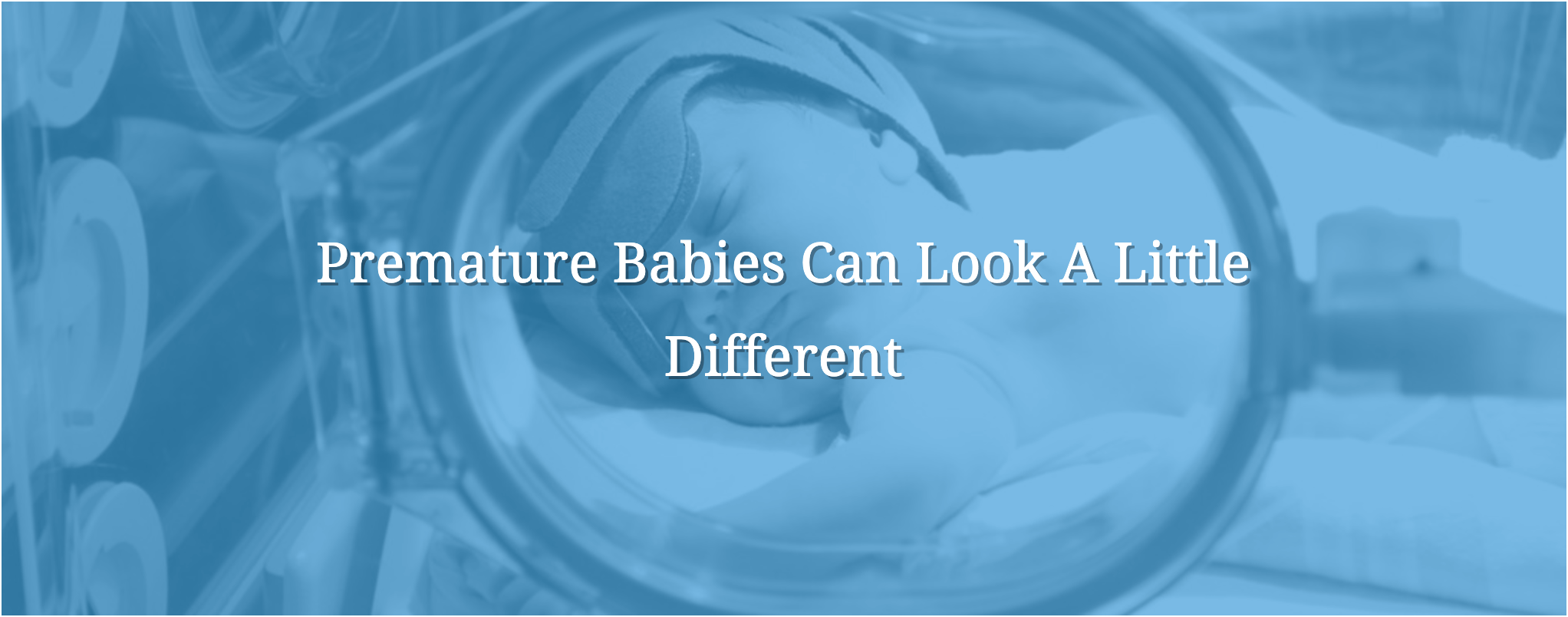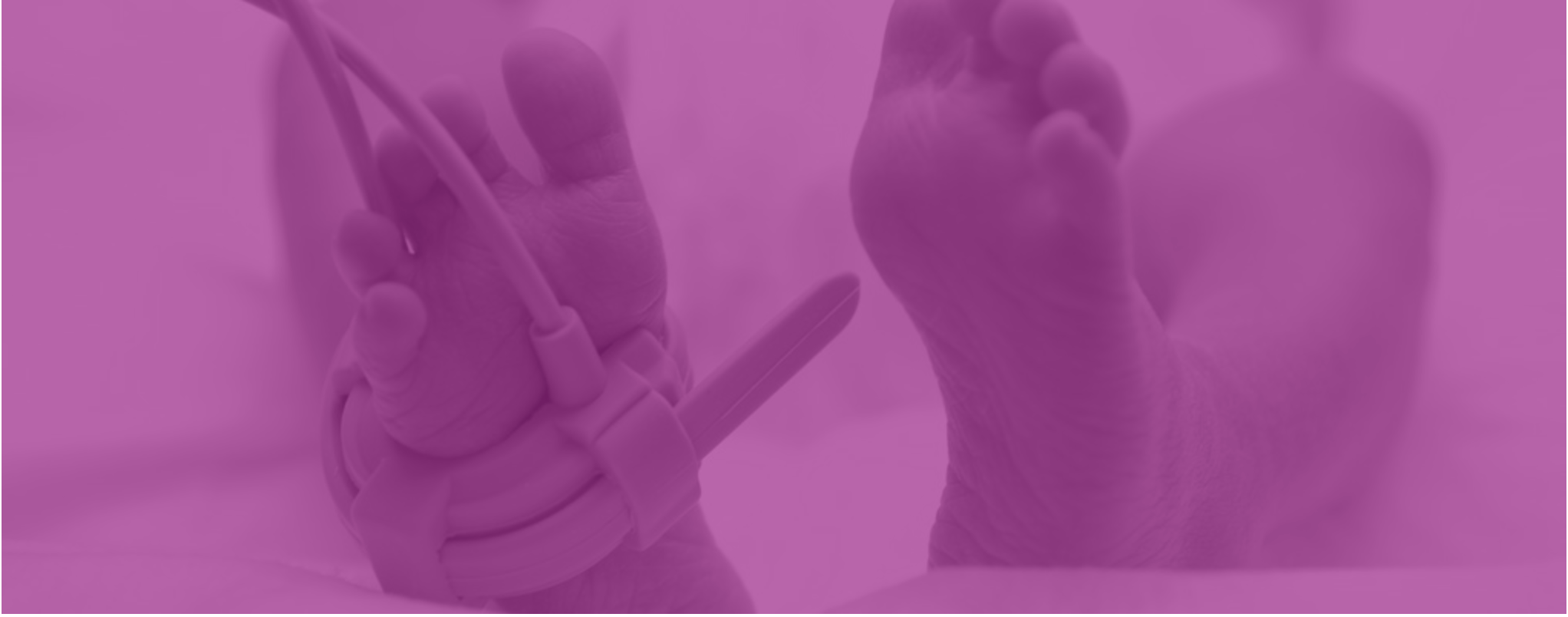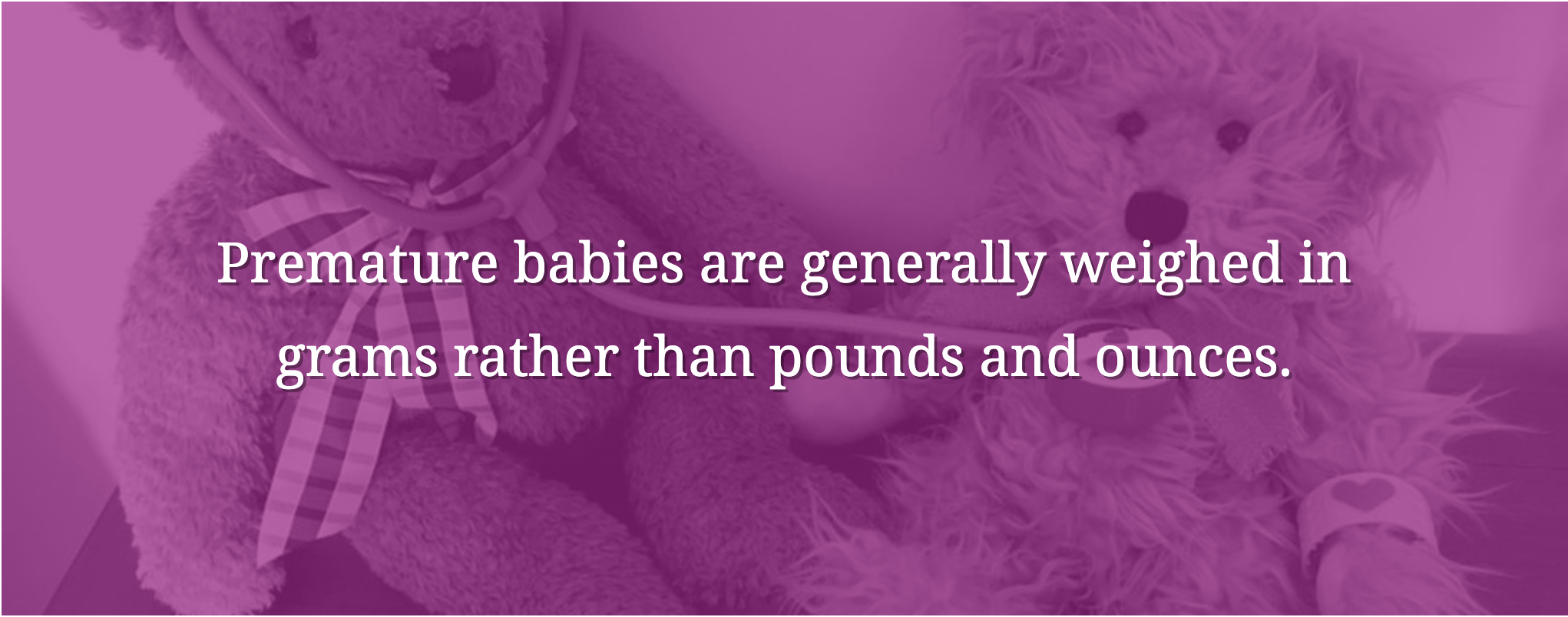What Preterm Babies Look Like
The visual signs of prematurity can soemtimes be distressing. Here, you can read about prematurity’s affect on a baby’s appearance and how to cope
Premature babies generally appear differently to term babies, in many ways. The first thing that you will notice is that your baby is small and fragile. This is because your baby has missed out on some growing time as a result of arriving early. Your baby will have their own distinctive appearance and personality. By observing your baby you will learn how to communicate with them and come to recognise their unique personality.

Features you will notice:
Skin
Depending on how early your baby arrived, their skin may be fragile, wrinkled, shiny, and almost translucent. It may even look too big for their body. Premature babies are generally covered with fine downy hair. As your baby moves towards term age, this downy hair gradually disappears, with the last areas to go being the arms and shoulders.
Term babies have a layer of brown fat underneath their skin which is underdeveloped in premature babies1. About 50% of this fat develops in the last 2 months of pregnancy1. By being born prematurely, your baby may not have had the chance to fully develop this layer of fat underneath their skin. This layer of the fat is needed to trap heat, prevent water loss, and protect against infection. If the layer of fat is not fully developed, there is an increased risk of high water loss through the skin. Water loss can lead to complications such as temperature instability, dehydration, electrolyte imbalance, as well as heat and calorie loss.
By placing your baby in an incubator, their temperature can be more easily controlled. Increasing the incubator’s humidity for extremely low birth weight (ELBW) babies and babies less than 30 weeks’ gestation can significantly reduce heat and water loss, and its associated complications2.
Hospital guidelines on humidification differ, but generally there is a weaning off humidity from 1 to 7 days, depending on the gestational age of the baby. If the layer of fat is not fully developed, there is also an increased risk of infection, i.e. the skin of the very premature baby will not provide an effective barrier to infection as it does in a term baby3. As your baby puts on weight, the fat will fill out their skin; reducing the likelihood of heat loss, water loss, and infection. It will also make them more rounded in appearance and more ‘baby-like’.
Nails
As your baby grows, their finger and toenails may progress from being just about visible to reaching the tips of their fingers and toes, with a normal appearance.
Heart Rate
If your baby was born at 24 to 28 weeks’ gestation, their heart rate may initially be 140 to 170 beats per minute. Your premature baby’s heart rate will reduce to a rate that is normal for term babies, e.g., 90-130 beats per minute, as they move towards term gestational age4. Some term babies have a low baseline heart rate which is more evident when they sleep.

Eyes and Ears
If your baby was born extremely preterm at 24 weeks’ gestation, their eyelids are likely thin and fused together. In addition, the pupils of their eyes cannot restrict in response to light, so although your baby will keep their eyes closed and spend most of their time in a sleep-like state initially, care must be taken to protect their eyes from light.
Over the next 2 weeks, your baby’s eyelids will gradually begin to open. However, at 26 week’s gestation, your baby’s pupils will still not constrict in response to light. Therefore, controlling the physical environment around your baby is essential in helping your baby adapt to the world. The lights in the neonatal unit will be dimmed, their incubator will be covered, and direct bright light on your baby will be avoided.
As your baby grows, they will develop the ability to adapt their pupils in response to light. Pupillary constriction and response to light has been detected from 30 weeks’ gestational age. This response to light will develop further with increasing gestational age. By 35 weeks’ gestation age, babies will have developed responsive to light similar to that of a term baby5.
If your baby was born at 24 weeks’ gestation, their ears will likely be flat, thin, and almost translucent. From 28 to 29 weeks’ gestation, your baby will become aware of low frequency sounds, and their sleep can be easily disturbed. At 34 weeks’ gestation, you baby will recognise familiar noises. At this age, the appearance of your baby’s ear will begin to look like those of a term baby but will remain soft and flat. Your baby’s ears will become firm as they approach term age, i.e. 37 weeks’ gestation.
Taste
From 28 to 29 weeks’ gestation, your baby will react to taste. By 34 – 35 weeks’ gestation, your baby will be able to distinguish tastes with a preference for sweeter tastes6.

Feeding
In the 24/25 weeks’ gestation baby, sucking is very primitive. By 28 weeks’ gestation, your baby will be able to suck and swallow, but not in a coordinated manner. It will be 32-34 weeks’ gestation before your baby will be able to co-ordinate both sucking and swallowing, although only for a short period.
This may be visually evident in a breastfed baby as they attempt to nuzzle to the breast to take 3-4 sucks. The ability to coordinate sucking and swallowing may slightly vary from baby to baby. As your baby progresses towards term gestation age, their sucking coordination and duration will also progress. As your baby gets stronger and sucking develops, tube-feeds will be phased out and replaced with feeds from the breast or bottle7.
Motor Activity
Your baby’s body might look limp (hypotonic) because of muscle weakness. They may have a flat posture on the mattress. This is in contrast to a full-term baby who tends to adopt a more curled up (flexed) position. From 28 to 29 weeks’ gestation, your baby’s reflexes may start to develop in a primitive way and they may start to grasp. Your baby’s movements will be less coordinated and seem jerky. Again, as your baby grows in strength, they will adopt a more flexed position with more coordinated movements.
Sleep States
Sleep states cannot be clearly classified in a very premature 24 weeks’ gestation baby. At this age, there is little eye movement during sleep. This progresses toward obvious/classified states of deep sleep, active sleep, and wakefulness by 30-32 weeks’ gestation.
Weight
The weight of your baby will be recorded in Kilograms (Kg). There are conversion charts in the neonatal unit to convert Kilograms to pounds (lbs) and ounces (oz), if you so wish. A rough guide is that a 24 weeks’ gestation baby weighs between 0.55-0.85 Kg, i.e. 550-850 grams(g). Weight progresses by roughly 0.1 Kg (100 g) per week to approximately 1.3-2 Kg (1300-2000 g) by 32 weeks’ gestation.
These values are rough guidelines and there is a wide variation of normality. Factors that may influence a baby’s weight include: gender; maternal age; ethnicity; parity; smoking; alcohol or substance abuse; hereditary factors; and health and well-being of the mother.
Genitals
Both male and female premature babies have immature genitals which may look different to a term baby’s. Your baby’s sex organs may look larger than average or expected. In the female premature baby, there may be a prominent clitoris at 24 weeks’ gestation. This will continue to be prominent until the labia develop about 34 weeks’ gestation.
For the male premature baby, testes appear in the scrotum by 28 weeks’ gestation. Nipples appear at 26/27 weeks’ gestation. As your baby grows towards term age, the breast tissue plumps out and becomes more visible3.
Please be aware that every baby has a different pace of progression. There is a wide range of normality. Try not to compare your baby to a sibling or another infant being cared for alongside your baby. Should you have any concerns, please speak to your doctor or nurse.
References:
1The American Congress of Obstetricians and Gynecologists. http://www.acog.org/Patients/FAQs/Prenatal-Development-How-Your-Baby-Grows-During-Pregnancy
2Cochrane, 2009. Sinclair L and Sinn JKH. Higher versus lower humidity in the prevention of mortality and morbidity of premature infants in incubators. Cochrane database of systematic reviews. www.cochranelibrary.com (http://www.cochrane.org/CD006472/NEONATAL_higher-versus-lower-humidity-for-the-prevention-of-morbidity-and-mortality-in-preterm-infants-in-incubators)
3Preemies – Second Edition: The Essential Guide for Parents of Premature Babies. Dana Wechsler Linden, Emma Trenti Paroli, and Mia Wechsler Doron. Gallery Books; New York, (2010).
4Cabal LA, Siassi B, Zanini B, Hodgman JE, Hon EE: Factors affecting heart rate variability in preterm infants. Pediatrics 1980, 65(1):50-56.
5Ikeda T, Ishikawa H, Shimizu K, Asakawa K, Goseki T: Pupillary Size and Light Reflex in Premature Infants. Neuroophthalmology 2015, 39(4):175-178.
6Tatzer E, Schubert MT, Timischl W, Simbruner G: Discrimination of taste and preference for sweet in premature babies. Early Hum Dev 1985, 12(1):23-30.
7www.irishprematurebabies.com

